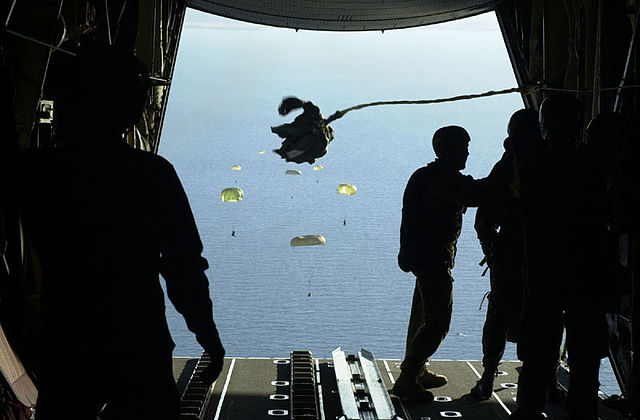2/5th Commando Squadron (Australia)
The 2/5th Commando Squadron was one of twelve independent companies and or commando squadrons of the Australian Army formed for service during World War II. Initially formed in 1942 as the "2/5th Independent Company", the 2/5th served in New Guinea, taking part in a major commando raid on Salamaua in June 1942. It was later withdrawn from New Guinea and reformed as the "2/5th Cavalry (Commando) Squadron", as part of the 2/7th Cavalry (Commando) Regiment which saw service in Borneo in 1945. It was disbanded in early 1946.
A section of 'C' platoon, 2/5th Independent Company, on an exercise walk along a jungle track, west of Bulwa in the Bulolo Valley.
2/5th's training camp in Tidal River, Victoria. Mount Oberon in the background was used by the company as part of its physical training course. (AWM photo)
Troops from B Platoon, 2/5 Independent Company leave camp to conduct a raid. (AWM Photo)
Members of the 7th Division at Balikpapan
The name commando has been applied to a variety of Australian special forces and light infantry units that have been formed since 1941–42. The first Australian "commando" units were formed during the Second World War, where they mainly performed reconnaissance and long-range patrol roles during Australia's campaigns in New Guinea and Borneo, although other units such as M and Z Special Units performed more clandestine roles. These units were disbanded following the end of the war; however, in the 1950s it was realised that there was a need for such units again in the Australian forces. Today, the Australian Army possesses a number of units that perform more conventional direct-action type commando roles, as well as counter-terrorism response, long-range patrolling, and clandestine deep-penetration operations.
The Commando Memorial in Martin Place, Sydney
Sergeant Leonard G. Siffleet of M Special Unit being beheaded by a Japanese soldier, Yasuno Chikao, on 24 October 1943. AWM photo.
Soldiers from the 1st Commando Company parachute with their inflatable boats from an RAAF C-130H into Shoalwater Bay







